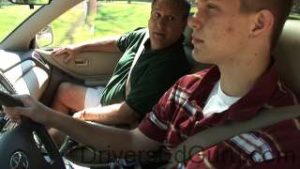Stage 3: Incorporate More Commentary Driving
Location: Anywhere except the highway
Length of Lesson: 20-30 minutes
So far throughout this process there have been several occasions where using commentary driving was highly recommended. At this point in your behind-the-wheel lessons, you should start incorporating even more commentary into your regular driving lessons.

When you should do the talking (and the driving)
Whenever you want to take your teen into a new driving environment, it’s always a great idea for you to get behind the wheel and provide the “play-by-play” commentary. The idea is for your teenager to get an idea for the types of things they should be on the lookout for.
For example, if you were to head into a heavily congested downtown area, you should point out all of the things you’re paying attention to when approaching an intersection. You’re looking at the cars around you, at crosswalks for pedestrians, and at the side streets for cars that may run a red light.
When you feel that you’ve given your teen a good idea of what to be wary, let them take the wheel.
Be careful of what questions you ask
Only ask questions relating to the current situation. Here are examples of good questions to ask:
- That car’s turn signal is on. Which direction is it going to turn?
- There’s a yield to the left. Does that apply to us?
- What is the current speed limit?
These questions are constructive because they directly apply to what is happening around your car. Your questions should not be distracting. They should be reinforcing the type of information your teen should be collecting while driving. For example, they must always know the speed limit.

Don’t ask “academic” or hypothetical questions while your teen is driving
The last thing you want to do while your teen is driving is to distract them with irrelevant questions. Examples of bad (yet good intentioned) questions are:
- What is the proper speed limit in school zones?
- What does a “yield” sign mean?
- What should you do if someone puts on their hazards?
While your teen should know the answers to all of these questions, they are not relevant when your teen is driving. There’s a reason why these types of questions are asked on a written test and not during a behind-the-wheel test.
Continue on to Intersections – Part 1

